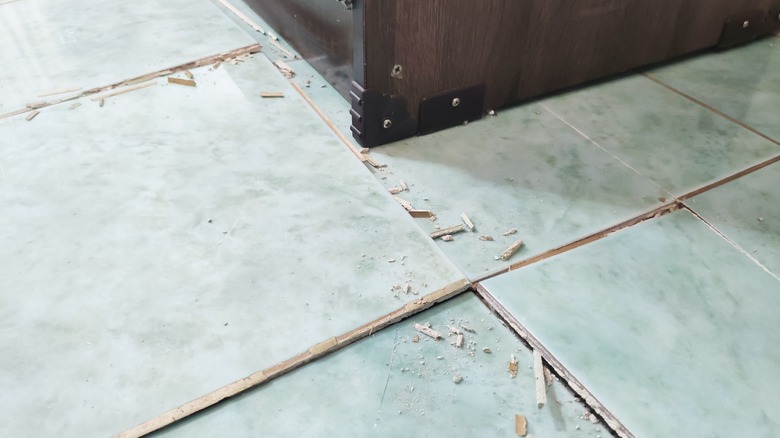Expansion Joints: What They Are & When To Use Them During A Flooring Installation
You might know an "expansion joint" as a long break in concrete parking garages or foundation slabs, filled with some rubbery substance. Or you might know the concept from a completely different set of materials and methods ... probably that gap you leave between hardwood flooring and walls. The idea is the same: Expansion joints allow for natural expansion or movement of materials (due to moisture, foot traffic, temperature changes, and other causes). Many common types of flooring (concrete, tile, hardwood, engineered hardwood, laminate, and vinyl tile) need expansion joints in one or more forms. You always need the gap between the flooring and your wall, but you might also need additional joints if your floor is over a particular size.
When you're talking about flooring rather than structural concrete, expansion gaps are more properly described as movement or movement accommodation joints. Those perimeter gaps around your walls and other obstructions are a very common type of movement joint, but the term also describes field or intermediate joints that you have to add in the midst of your flooring in a large room or outdoor area. Without a movement accommodation joint, flooring can crack, de-bond, tent, bulge, and buckle.
When you need movement joints for various types of flooring
In addition to the ever-present perimeter movement joint, you should sometimes plan for intermediate joints as well, both in large rooms and where flooring crosses a threshold into a second room. Tile floors have different requirements based on several factors. Heated floors need an expansion gap every 20 feet, while unheated floors need a gap every 26 feet. Outdoor tile floors, and those in direct sunlight, need a movement joint every 8-12 feet. A flawless vinyl tile or plank flooring installation usually only requires a perimeter gap. The size of the gap is affected by the size of the room, and shouldn't be less than ¼ of an inch in width.
Forgetting an expansion gap is one of the crucial mistakes everyone makes when installing hardwood flooring. Seasonal expansion and contraction of timber planks is the reason why there's an optimal time of year to fix the gaps in your hardwood flooring. Hardwood typically only requires a perimeter gap, but there are some exceptions when it comes to very large rooms or installations like gyms, which can require intermediate expansion joints. Engineered hardwood can make use of movement joints every 26 feet of width or 39 feet of length. Laminate flooring has similar requirements. Note that these are general guidelines, and you should always consult the installation instructions for your specific flooring product.

